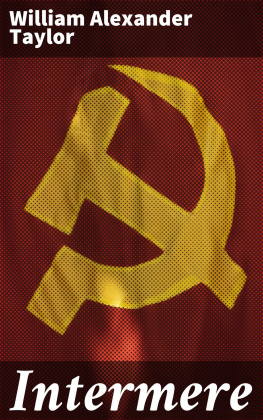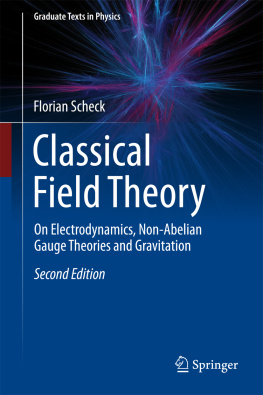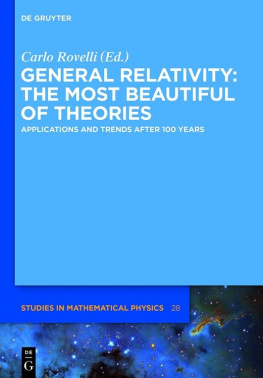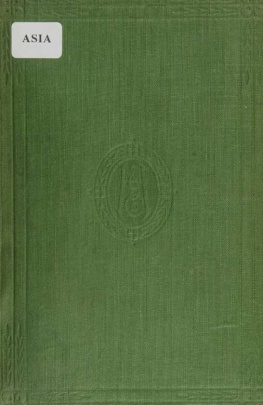Introduction
Table of Contents
"Non fingendum, aut excogitandum, sed inveniendum quid Natura faciat aut ferat."Bacon.
"Causas rerum natnralium non plures admitti debere, quam qu et verce sint, et earum phnomenis explicandis svfficiant."Newton.
Ever since the grand demonstration by Newton in 1682, that the moon is a falling body, observing precisely the same law of decline from a rectilinear path as the cannon-ball, and that it is therefore under the dominion of the same force, an eager and unceasing desire has been manifested to discover an antecedent or origin of this universal tendency of matter.
Even before this date, or in 1671, the ingenious Dr. Robert Hooke had endeavored to trace the cause of gravitative fall to the external action of waves in a surrounding medium. He appears to have been led to this reflection by observing that small bodies floating on the surface of agitated water collected toward the center of disturbance or the origin of the waves.[1]
Newton himself, as is well known, speculated on this subject, and some years before arriving at his great generalization, he threw out a suggestion as to the cause of terrestrial gravity in a letter to Mr. Boyle. As connected with this speculation, it may be well to recur to Newton's still earlier statement of his conceptions in regard to the nature and action of the tether. In a letter to Mr. Henry Oldenburg, secretary of the Royal Society of London, in January, 16756, he thus unfolds the hypothesis :
"First, it is to be supposed therein that there is an aetherial medium, much of the same constitution with air, but far rarer, subtiler, and more strongly elastic. But it is not to be supposed that this medium is of one uniform matter, but composed partly of the main phlegmatic body of the aether, partly of other various aetherial spirits, much after the manner that air is compounded of the phlegmatic body of air intermixed with various vapors and exhalations; for the electric and magnetic effluvia and the gravitating principle seem to argue such variety. Perhaps the whole frame of nature may be nothing but various contextures of some certain aetherial spirits or vapors, condensed as it were by [206] preprecipitation, much after the manner that vapors are condensed into water.. Thus perhaps may all things he originated from aether. "
"In the second place, it is to be supposed that the aether is a vibrating medium like air, only the vibrations far more swift and minute; those of air made by a man's ordinary voice succeeding one another at more than half a foot or a foot distance, but those of aether at a less distance than the hundred-thousandth of an inch. And as in air the vibrations are some larger than others, but yet all equally swift, (for in a ring of bells the sound of every tone is heard at two or three miles^ distance in the same order that the bells are struck,) so I suppose the aetherial vibrations differ in bigness but not in swiftness."[2]
Newton had in 1672 controverted the supposed opposition of his views to the action of the aether by answering : " The objector's hypothesis as to the fundamental part of it is not against me. That fundamental supposition is, ' That the parts of bodies when briskly agitated do excite vibrations in the aether, which are propagated every way from those bodies in straight lines, and cause a sensation of light by beating and dashing against the bottom of the eye ; something after the manner that vibrations of the air cause a sensation of sound by beating against the organ of hearing.' Now the most free and natural application of this hypothesis to the solution of phenomena I take to be this : That the agitated parts of bodies, according to their several sizes, figures, and motions, do excite vibrations in the aether of various depths or bignesses, which being promiscuously propagated through that medium to our eyes, effect in us a sensation of light of a white color ', but if by any means those of unequal bigness be separated from one another, the largest beget a sensation of a red color, the least or shortest of a deep violet, and the intermediate ones of intermediate colors, much after the manner that bodies, according to their several sizes, shapes, and motions, excite vibrations in the air of various bignesses, which according to those bignesses make several tones in sound : that the largest vibrations are best able to overcome the resistance of a refracting superficies, and so break through it with the least refraction ; whence the vibrations of several bignesses, that is the rays of several colors which are blended together in light, must be parted from one another by refraction, and so cause the phenomena of prisms and other refracting substances ; and that it depends on the thickness of a thin transparent plate or bubble whether a vibration shall be reflected at its further superficies or transmitted; so that, according to the number of vibrations interceding the two superficies, they may be reflected or transmitted for many successive thicknesses. And since the vibrations which make blue and violet are supposed shorter than those which make red and yellow, they must be reflected at a less thickness of the plate, which is sufficient to explicate all the ordinary phenomena of those plates or bubbles, and [207] also of all natural bodies, whose parts are like so many fragments of such plates. These seem to be most plain, genuine, and necessary conditions of this hypothesis. And they agree so justly with my theory, that if the animadversor think lit to apply them, he need not on that account apprehend a divorce from it."[3]
This passage is interesting as being the earliest presentation of a theory of color, now universally adopted. The same views were repeated as a suggestion, some forty-five years later, in the second edition of his treatise on " Optics ."[4]
In his "Letter to the Hon. Mr. Boyle," dated February 28, 16789, (about six years later,) Newton, after proposing as an explanation of the phenomena of cohesion, chemical affinity, &c., the "supposition" that an exceedingly elastic subtile aetherial substance is diffused through all places and bodies, but much rarer within and near gross bodies than beyond them, adds toward the conclusion of his letter: "I shall set down one conjecture more, which came into my mind now as I was writing this letter : it is about the cause of gravity. For this end I will suppose aether to consist of parts differing from one another in subtilty by indefinite degrees, in such a manner that from the top of the air to the surface of the earth, and again from the surface of the earth to the center thereof, the aether is insensibly finer and finer. Imagine now any body suspended in the air or lying on the earth, and the ether being by the hypothesis grosser in the pores which are in the upper parts of the body than in those which are in the lower parts, and that grosser aether being less apt to be lodged in those pores than the finer aether below, it will endeavor to get out, and give way to the finer a3ther below, which cannot be without the bodies descending to make room above for it to go into. From this supposed gradual subtilty of the parts of the aether, some things above might be further illustrated and made more intelligible. For my own part, I have so little fancy to things of this nature, that had not your encouragement moved me to it, I should never I think have thus far set pen to ])aper about them."[5] It will be seen from the above that Newton had not at this time (only three years before the crowning epoch of his life) extended his conception of "gravity" to the outlying universe.













